B
Blanks are produced from the shearing or cutting of outside contours or shapes out of sheet or strip stock. For larger production runs, blanking is often done in multiple dies, and is combined with other operations such as piercing and forming in combination and progressive dies.
A plate or block attached to the top of the press bed where the die is fastened. In some rare cases the die is fastened directly to the bed.
C
A mechanical press with a main crank or eccentric shaft connected to the driving source by one or more sets of gears. A triple geared machine will have three sets of gears and pinions and four driving shafts including the main crankshaft. A twin geared press has two main gears on the crankshaft meshing with two main pinions on the first intermediate shaft.
A squeezing operation, usually performed in a closed die in which the metal is forced to flow and fill the shape and profile of the die. There is a definite change in metal thickness.
Conveys motion and pressure from a revolving crank of eccentric to a sliding or swinging member, such as a slide or lever. A press connecting rod.
Mechanical press slide actuated by a crankshaft.
An operation in which the open end of a can or shell is forced tight over or around a mating part. This type of work is limited largely to assembly operations.
The forming of an edge having a circular cross section along a sheet or around the end of a shell or tube. This operation is sometimes called false wiring.
D
Forming of deep recessed parts from sheet material by means of a plastic flow of the material worked in presses and dies.
The amount of bending or the deviation from a straight line or a plane when a force or load is applied to a surface of a machine member or part.
1. A tool used on a press for any operation or series of operations, such as forming, drawing, piercing and cutting. The upper member (or members) are attached to the slide (or slides) of the press, with the lower member clamped or bolted to the bed or bolster, shaped so that the material placed between them is cut or formed when the press makes a stroke.
2. The female part of a complete die assembly as described in (1).
3. A tool for cutting external threads.
2. The female part of a complete die assembly as described in (1).
3. A tool for cutting external threads.
An attachment or press accessory which gives additional motion or pressure required in many compound press operations. The pressure medium can be rubber, springs, air or liquid (usually oil). Air (pneumatic) cushions are the most commonly used. Uses include blank holding, drawing, maintaining uniform pressure on a die part, knock-out, and stripping. Typically mounted in order on the press bed, they can sometimes be mounted on the top of a press slide flange.
The closed height of a die during the working portion of the press or completed operation in the die. Die Height is measured from the top of the bolster plate to the bottom of the slide.
A mechanical press having two independent parallel movements of two mechanical press slides. One slide is operated by a crankshaft – the outer or blank holder slide which dwells during the drawing process is usually operated by a toggle mechanism or cams.
A mechanical single action press in which the slide is operated by two cranks and connections. There are two basic classifications for mechanical double crank presses:
1. Straightside press with straight uprights or housing that enclose the slides of the die space.
2. Gap Frame Stamping Presses with uprights or housings (parts of frame) that are open leaving the top of the bed and die space clear for easy access of material. This definition is general and covers both single frame and tie rod frame machines.
1. Straightside press with straight uprights or housing that enclose the slides of the die space.
2. Gap Frame Stamping Presses with uprights or housings (parts of frame) that are open leaving the top of the bed and die space clear for easy access of material. This definition is general and covers both single frame and tie rod frame machines.
The flywheel is mounted on a separate shaft and a double gear reduction is used to transmit power to the main shaft. This type of press is used on deeper draw work where a considerable amount of energy is required due to the longer distance as well as where the maximum drawing speed of various metals limits the speed of the slide. Double-geared presses generally operate in a speed range of 10 to 30 spm.
E
Essentially a disk arranged to rotate around a center, not the center of dish but parallel to it. An eccentric should crank with a crankpin of such size that it contains or surrounds the shaft. The eccentric with its strap or connection is used in the eccentric press and for driving auxiliary attachments, such as liftouts and various types of feeds.
These presses usually have a double geared drive and are used a great deal for medium and heavy blanking, and draw work where long strokes and fairly slow speeds are required.
These presses are recommended for short stroke work or for high speed operation. Basically the same as the crank press, these presses have an eccentric shaft instead of a crankshaft. The use of the eccentric shaft reduces the effect of bending on the main shaft thus making the shaft stiffer.
A process for producing raised or sunken designs in sheet metal by means of a male and female die.
A process in which pressure is applied to a slug of metal causing the metal to flow either up around the punch (toothpaste tubes) or down in the direction of pressure (cartridge cases – Hooker process).
F
A wheel used on an engine or machine with a rotation energy or inertia able to prevent excessive or sudden changes in speed. In modern mechanical presses the flywheel is usually belted, chained or geared to the driving motor. A clutch is mounted on or within the flywheel.
A mechanical press which has the flywheel mounted directly on the main crank or eccentric shaft without gearing. Sometimes called a plain or non-geared press. This press model is primarily for blanking and piercing operations where energy requirements are comparatively small and where the press operates at a fairly high speed (90 spm and above).
A press that has four connecting rods between the drive eccentrics and the slide.
G
A general definition of presses in which the uprights or housing are made in the form of a letter C making both ends of the die space accessible.
A mechanical press with a main crank or eccentric shaft connected to the driving source by one or more sets of gears. A triple geared machine will have three sets of gears and pinions and four driving shafts including the main crankshaft. A twin geared press has two main gears on the crankshaft meshing with two main pinions on the first intermediate shaft.
Guides or shoes that insure the proper sliding fit between two machine parts and which usually are adjustable for taking up excessive wear, e.g., press gibs that guide the press slide.
H
A specialized design of automatic mechanical presses with rigid frames and comparatively lightweight slides and parts designed for high speed. These machines have a comparatively short stroke, are built in one-piece or built-up frames and arranged with various types of feeds to meet customer requirements.
A press whose slide or ram is actuated by hydraulic cylinder and piston whose pressure is obtained from a hydraulic pump. The press cylinder, the pump, and the fluid(usually oil) under pressure, together with connecting valves and controls from a hydraulic system which theoretically acts in accordance with the hydraulic principle.
I
A machine control process used to adjust and set dies and other tools in by precisely controlling the working members of the press in short increments usually by rapidly engaging and disengaging the clutch or using electric or pneumatic push buttons.
Small and medium size mechanical crank presses which can be inclined or tilted backward to facilitate ejection of finished parts by gravity. These presses are usually open-back, gap frames with a right to left crankshaft up to 200 tons. Typically used in the upright or vertical position, these presses are readily adjustable, usually by a hand mechanism, to any desired inclination up to 45 degrees. The inclinable press is widely used, being particularly suited to blanking, piercing, forming and shallow drawing operations for a variety of small and medium size parts. This type of press is usually equipped with a mechanical feed for rapid automatic production.
A process in which the wall thickness of the shell is reduced without changing the O.D. of the shell (cartridge case work for example).
K
(Also called Embossing or Coining Press) – A heavy, powerful comparatively short stroke mechanical press in which the slide is directly actuated by a single toggle (or knuckle) joint, closed and opened by means of a connection and crank. Available in 30 to 3,000 tons, the knuckle joint press is used for embossing, coining, sizing, heading, swaging, and extruding.
L
Slitting and forming a pocket shaped opening in sheet metal, without removing metal.
A modified slide motion that produces either constant velocity or increased slow down through the working part of the press stroke.
M
A press whose slide or ram is operated by a crank, eccentric cam, toggle links or other mechanical means, as contrasted to fluid or other means.
N
Reducing the diameter of a portion of the length of a cylindrical shell or tube.
O
An open back inclinable gap press with a one-piece frame that has the opening at the back between the two gap uprights usually slightly more than the left to right dimension of the slide flange. Commonly referred to as an OBI Press.
P
A general term for cutting (shearing or punching) openings, such as holes and slots in sheet material, plate or parts. Similar to blanking; the slug or piece produced by piercing is scrap, whereas the blank produced by blanking is the useful part. In both cases the burr is opposite.
Conveys motion and pressure from a revolving crank of eccentric to a sliding or swinging member, such as a slide or lever. A press connecting rod.
Pneumatic (air) attachment consisting essentially of cylinder piston, pressure plate and accessories generally used with a press for clamping, blank holding or ejecting.
A machine having a stationary bed or anvil and a slide (ram or hammer) which has reciprocating motion toward and away from the bed surface and at right angles to the bed surface, the slide being guided in the frame of the machine to give a definite path of motion.
The stationary portion or „table“ of the press to which the bolster is attached.
The friction mechanism used to stop or control the motion of a press, feed or other mechanism.
Rated press capacity is the tonnage pressure the slide can safely exert at the bottom of the stroke. Mechanical press capacity is typically based on the bending capacity of the main shaft (crank, toggle, or eccentric shaft).
A coupling used to connect or disconnect a driving machine-member, such as a shaft or wheel, to or from a driven machine-member, such as another wheel or shaft. The engaging or disengaging can be done by a hand operated controlling device operated manually or automatically.
A series of two or more dies arranged in line for performing two or more operations on a part, one operation (single or compound) performed in each die, at each station. Work in the form of a strip is usually fed to progressive dies automatically by a roll feed.
These presses are commonly used for producing finished parts from coil, and are also referred to as high speed presses or high production presses. They may be single or double crank, eccentric shaft, straightside presses and are equipped with an automatic coil feeding mechanism. The design of this class press takes into consideration the additional accuracy and rigidity required by progressive die operations.
1. Punch (or punching) press is the name given to an end wheel gap press of the fixed bed type. Used for piercing (punching) operations.
2. The name is used loosely to designate any mechanical press.
2. The name is used loosely to designate any mechanical press.
R
The second operation following deep-drawing operations, in which cups are deepened and reduced in cross section.
S
The shut height of an upright press is the distance from the top of the bed to the bottom of the slide with stroke down and adjustment up. The shut height must always be defined either from the top of the bed or from the top of the bolster. The shut height of a horizontal or inverted press, or of a press with adjustable bed, can be defined in a similar manner. Generally the shut height is equal to the maximum die-height of the die that can be accommodated, taking the bolster into consideration.
A mechanical press whose flywheel, clutch/brake and main drive motor has been replaced by a servo motor drive system to provide total programmability of the press stroke, speed and slide motion profile.
Any press with a single slide and usually considered to be without any other motion or pressure device which would affect the press working on the part.
The flywheel is mounted on a separate shaft and a single gear reduction is used to transmit the power to the main shaft. This type of press is used for shallow draw work, forming, and similar operations requiring considerably more energy than is available on the flywheel type press. In this type of press strokes per minute is generally in the range of 30 to 90 spm.
A mechanical press in which the slide is operated by one connection.
The most common name for the main reciprocating member of a press, guided in the press frame and to which the punch or upper die is fastened. It is also referred to as the ram. The inner slide of a double action press is called the plunger; the outer slide of a double action press is called the blank holder slide, and the slide of a hydraulic press is often called the platen.
The distance a mechanical press slide can be moved from its maximum shut height to reduce the die space height. The adjustment can be performed by hand or with a power mechanism.
An operation in which two or more parts are assembled permanently by upsetting a small portion of metal over the mating part, causing the compression on the assembled parts.
Any mechanical press with uprights or housing with plain, flat sides (usually vertical) enclosing the left and right sides of the die space. This classification of presses includes many types and designs, such as single crank, double crank, eccentric, level, four point and enclosed presses.
The reciprocating motion of a press slide, usually specified as the number of inches between the terminal points of the motion.
Forming a metal by the rapid striking of a large number of successive blows. In the case of aircraft cable fittings, the fitting is rotated while the press blows are being struck.
T
Four long rods, with threads and nuts on both ends, which hold the frame members of a straightside press together. These rods are stretched to place the frame members under compressive load.
The open space in a gap frame press back of the slide centerline. The depth of throat (gap) is the distance from the slide centerline back to the frame metal of the upright section.
A secondary operation on drawn or formed parts to remove excess metal on the flange or axial length.
A mechanical press in which the slide is operated by two connections.



